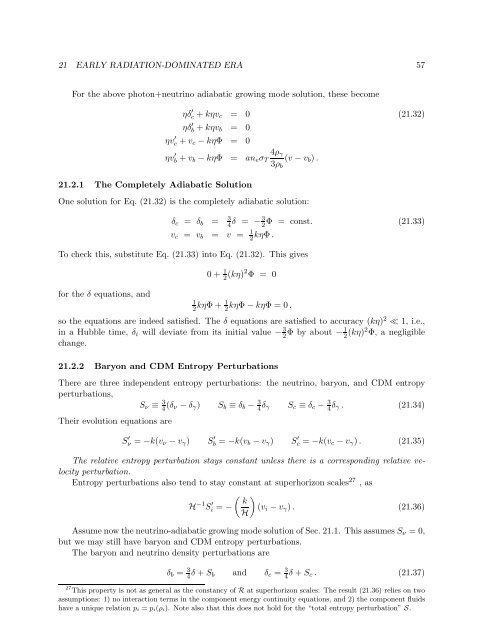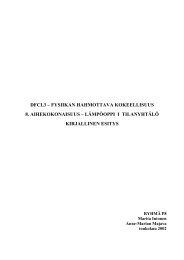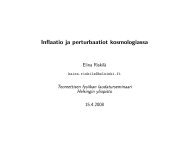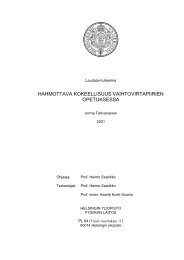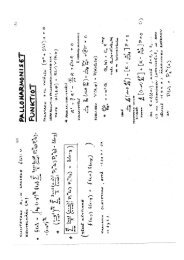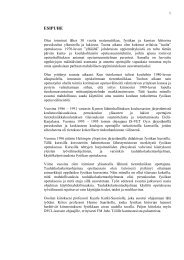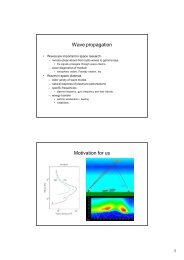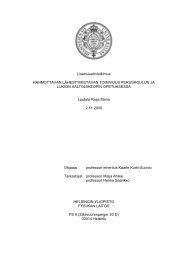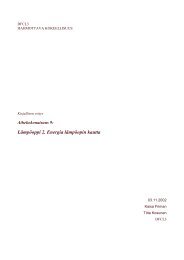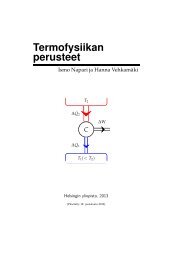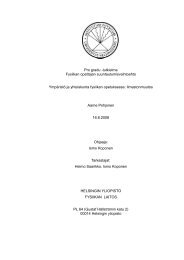Cosmological Perturbation Theory, 26.4.2011 version
Cosmological Perturbation Theory, 26.4.2011 version
Cosmological Perturbation Theory, 26.4.2011 version
You also want an ePaper? Increase the reach of your titles
YUMPU automatically turns print PDFs into web optimized ePapers that Google loves.
21 EARLY RADIATION-DOMINATED ERA 57For the above photon+neutrino adiabatic growing mode solution, these becomeηδ ′ c + kηv c = 0 (21.32)ηδ ′ b + kηv b = 0ηv ′ c + v c − kηΦ = 0ηv ′ b + v b − kηΦ = an e σ T4ρ γ3ρ b(v − v b ).21.2.1 The Completely Adiabatic SolutionOne solution for Eq. (21.32) is the completely adiabatic solution:δ c = δ b = 3 4 δ = −3 2Φ = const. (21.33)v c = v b = v = 1 2 kηΦ .To check this, substitute Eq. (21.33) into Eq. (21.32). This givesfor the δ equations, and0 + 1 2 (kη)2 Φ = 012 kηΦ + 1 2kηΦ − kηΦ = 0,so the equations are indeed satisfied. The δ equations are satisfied to accuracy (kη) 2 ≪ 1, i.e.,in a Hubble time, δ i will deviate from its initial value − 3 2 Φ by about −1 2 (kη)2 Φ, a negligiblechange.21.2.2 Baryon and CDM Entropy <strong>Perturbation</strong>sThere are three independent entropy perturbations: the neutrino, baryon, and CDM entropyperturbations,S ν ≡ 3 4 (δ ν − δ γ ) S b ≡ δ b − 3 4 δ γ S c ≡ δ c − 3 4 δ γ . (21.34)Their evolution equations areS ′ ν = −k(v ν − v γ ) S ′ b = −k(v b − v γ ) S ′ c = −k(v c − v γ ). (21.35)The relative entropy perturbation stays constant unless there is a corresponding relative velocityperturbation.Entropy perturbations also tend to stay constant at superhorizon scales 27 , as( ) kH −1 S i ′ = − (v i − v γ ). (21.36)HAssume now the neutrino-adiabatic growing mode solution of Sec. 21.1. This assumes S ν = 0,but we may still have baryon and CDM entropy perturbations.The baryon and neutrino density perturbations areδ b = 3 4 δ + S b and δ c = 3 4 δ + S c . (21.37)27 This property is not as general as the constancy of R at superhorizon scales: The result (21.36) relies on twoassumptions: 1) no interaction terms in the component energy continuity equations, and 2) the component fluidshave a unique relation p i = p i(ρ i). Note also that this does not hold for the “total entropy perturbation” S.


